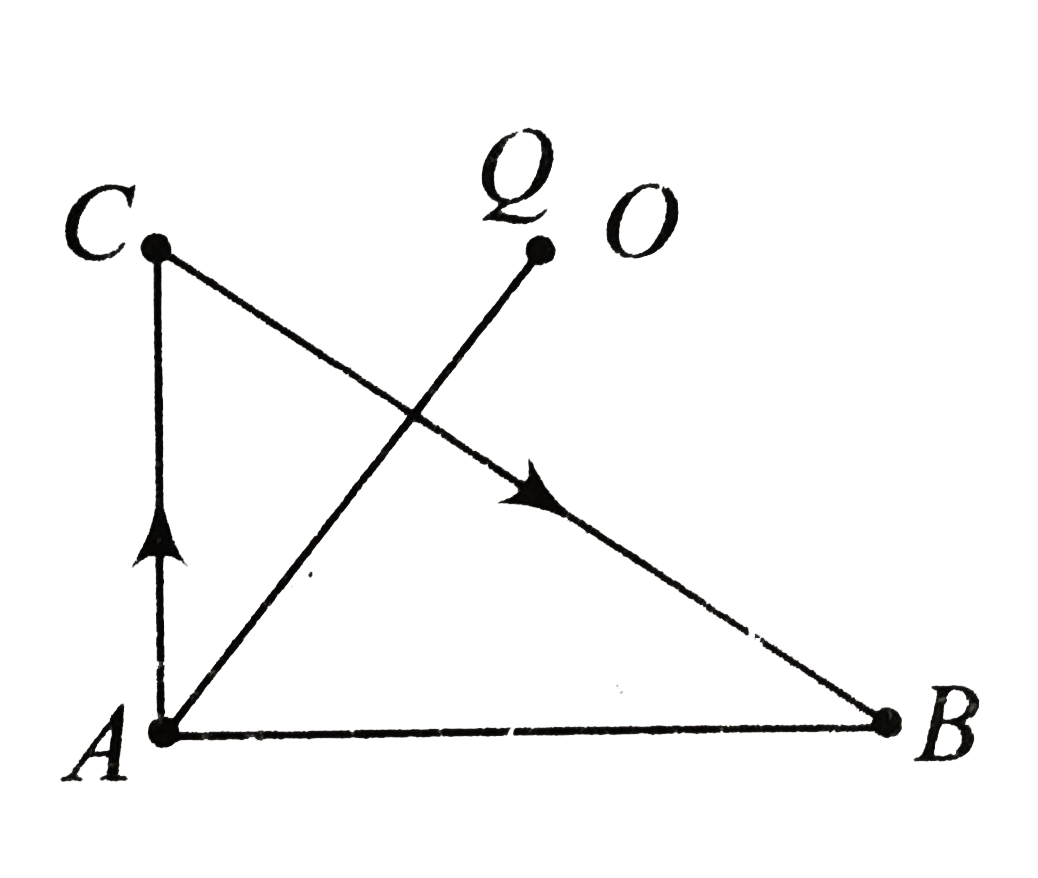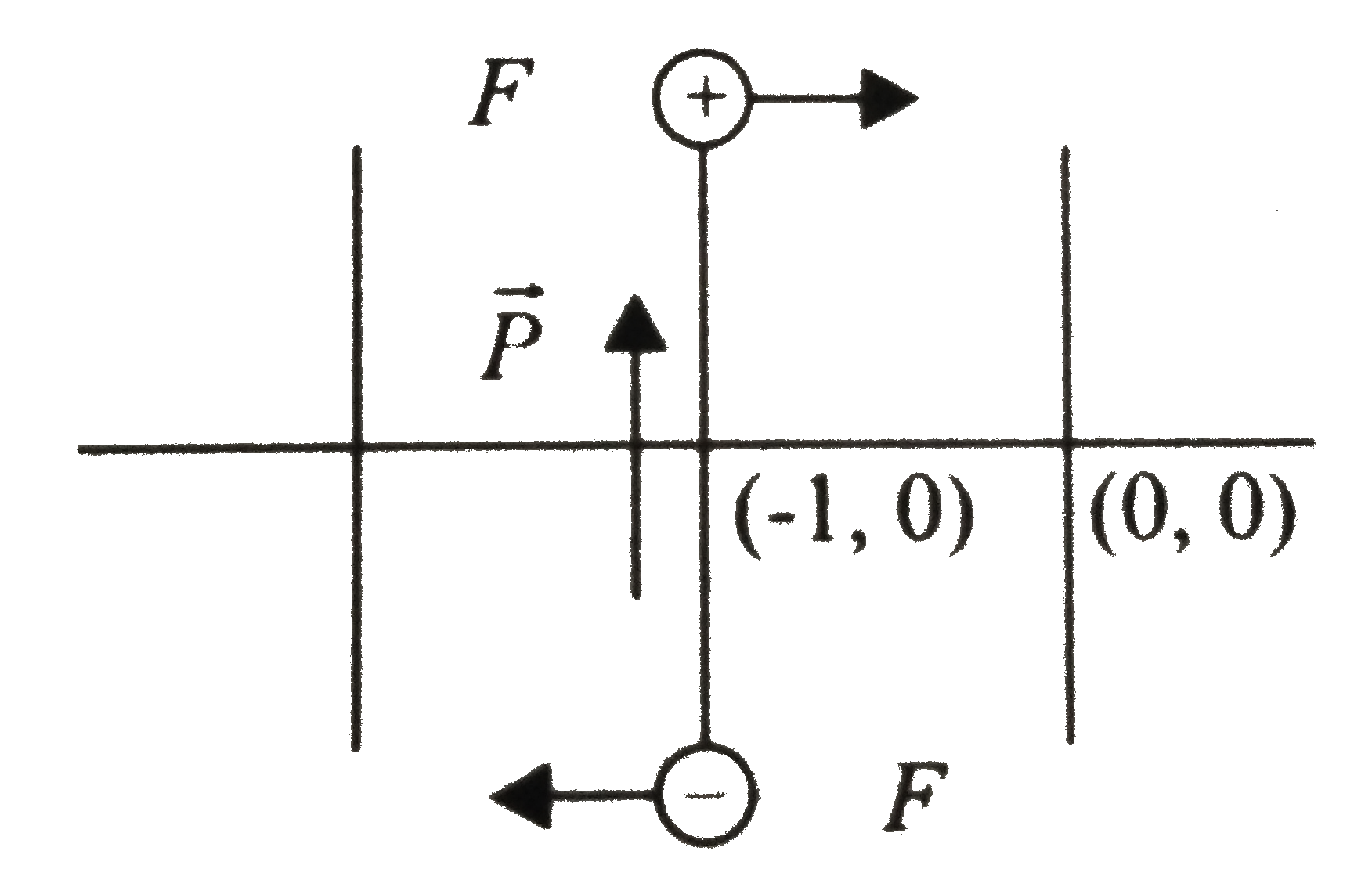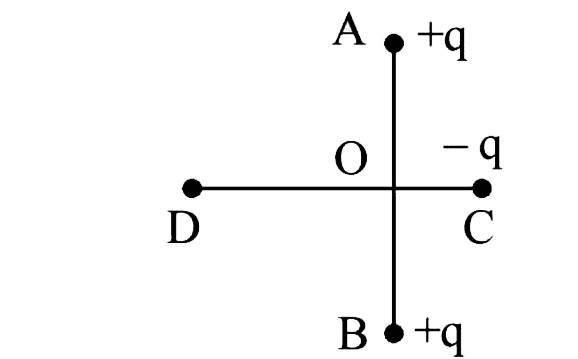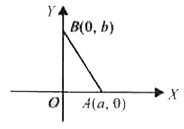There is a fixed positive charges Q at O, and A and B are points equidistant from O. A positive charge +q is taken slowly by an external agent from A to B along the line AC and then along the line CB.

The total work done on the charge is zero.
The work done by the electrostatic force from A to C is negative.
The work done by the electrostatic force from C to B is positive.
The work done by electrostatic force in taking the charge from A to B is dependent on the actual path.
The correct Answer is:A, B, C
a.,b.,c.
(a) is correc because potential of A and B is same. (b) is correct because charge is going from low potential to high potential. Electric potential energy increases and electrostatic forces do negative work. Similarly (c) is also correct.

Topper's Solved these Questions
- MISCELLANEOUS VOLUME 3Book:CENGAGE PHYSICSChapter:MISCELLANEOUS VOLUME 3Exercise:Assertion and Reason Type
Explore 8 Videos
- MISCELLANEOUS VOLUME 3Book:CENGAGE PHYSICSChapter:MISCELLANEOUS VOLUME 3Exercise:Comprehension Type
Explore 94 Videos
- MISCELLANEOUS VOLUME 3Book:CENGAGE PHYSICSChapter:MISCELLANEOUS VOLUME 3Exercise:True and False
Explore 3 Videos
- MECHANICAL PROPERTIES OF SOLIDSBook:CENGAGE PHYSICSChapter:MECHANICAL PROPERTIES OF SOLIDSExercise:Question Bank
Explore 4 Videos
- MISCELLANEOUS VOLUME 5Book:CENGAGE PHYSICSChapter:MISCELLANEOUS VOLUME 5Exercise:Integer
Explore 12 Videos
Similar Questions
A positive charge +q is located at a point. What is the work done if a unit positive charge is carried once around this charge along a circle ofradius r about :
View SolutionTwo identical negative charges are fixed on X axis at equal distances from the origin (O). A particle having positive charge starts at a large distance from O, moves along the Y axis, passes through the origin and moves far away from O in the positive Y direction. Describe qualitatively how its acceleration charges as it moves. Draw a rough graph showing the variation of acceleration (a) vs position of the particle (y). Take the acceleration of the particle to be positive in + Y direction.
View Solution
Knowledge Check
The work done in bringing a unit positive charge from infinite distance to a point at distance x from a positive charge Q is W. Then the potential ϕ at that point is
AWQxBWCWxDWQThere is a plane of uniform positive charge density o parallel to the yz-plane and located at x = 2d. A point charge q+ is placed at the origin. Solve for the position x along the x-axis, where a positive test charge will have a net force of zero.
 Ax=√q2πεσBNo solutionCx=√2πσdDx=−2d
Ax=√q2πεσBNo solutionCx=√2πσdDx=−2dTwo charges +Q each are fixed at points C and D. Line AB is the bisector line of CD. A third charge +q is moves from A to B, then from B to C
 AFrom A to B electrostatic potential energy wil decreseBfrom A to B electrostastic potential ennergy wil increaseCFrom B to C electrostatic potential energy will increaseDFrom B to C electrostatic potential energy will decrease
AFrom A to B electrostatic potential energy wil decreseBfrom A to B electrostastic potential ennergy wil increaseCFrom B to C electrostatic potential energy will increaseDFrom B to C electrostatic potential energy will decrease
Two identical positive charges are fixed on the y-axis, at equal distances from the origin O. A particle with a negative charges starts on the x-axis at a large distance from O. moves along the x-axis passes through O, and moves far away from O on the other side. Its acceleration a is taken as positive along its direction of motion. Plot acceleration a of the particle against its x-coordinate.
View SolutionTwo fixed, equal, positive charges, each of magnitude 5×10−5 coul are located at points A and B separated by a distance of 6m. An equal and opposite charge moves towards them along the line COD, the perpendicular bisector of the line AB.
The moving charge, when it reaches the point C at a distance of 4m from O, has a kinetic energy of 4 joules. Calculate the distance of the farthest point D which the negative charge will reach before returning towards C.

View SolutionTwo equal positive charges Q are fixed at points (a, 0) and (−a,0) on the x-axis. An opposite charge -q at rest is relased from point (0, a) on the y-axis. The charge -q will
View SolutionA charge +q is placed at the origin O of X- Y axes as shown in the figure . The work done in taking a charge Q from A to B along the straight line AB is

View SolutionTwo equal negative charges are fixed at points and on y-axis. A positive charge Q is released from rest at the point on the x-axis. The charge Q will:
View Solution